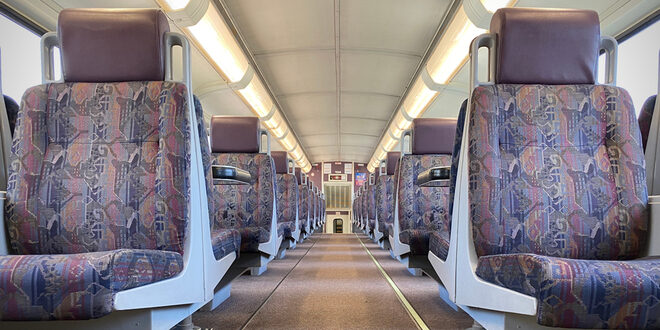San Bernardino has had more than its fair share of public mass transportation projects over the last few decades. Omnitrans, the bus system for the valley from Upland to Yucaipa has always been based in the city. The last traditional stop for Metrolink in the east is San Bernardino. The sbX Rapid Bus line from Cal State to Loma Linda was built here too, along with the new “multimodal” transit center on Rialto Avenue for sbX, Omnitrans, Metrolink and the final leg of the Redlands Passenger Rail line to be finished next year.
Metrolink has now been in operation for 28 years and Omnitrans for 45. The sbX line is much newer but will have its 7-year anniversary next month. Every one of these operations has been linked to the Holy Grail of “transit-oriented development” (TOD) that is supposed to get Californians out of their cars, solve traffic congestion, and usher Southern California into a carbon-free utopia.
The concept of TOD makes sense on paper. Provide residential, business and recreational space within walking distance of public transit and you create a symbiotic, high-density arrangement for removing the automobile from public life. Carbon catastrophe averted. World saved!
Even with nearly 50 years and billions of dollars invested in public transportation, and the annual addition of hundreds of miles to the thousands of miles of existing transit, ridership has remained stagnant. This does not include the repurposing of hundreds of miles of car lanes, eliminated and replaced by empty bicycle lanes.
But this isn’t what is worrying high-paid social engineers in the transportation industry now. Thanks to Covid-19, mass transit may meet its own version of “Final Destination.”
Traffic engineers pushing TOD always thought that the public would tire of long, single-passenger commutes between home and work. During the advent of Metrolink, the idea was that people would always work in central business areas like downtown Los Angeles and that we could connect people via train to their suburban homes. In recent years, that evolved into regional work hubs connected by rail and bus, which ultimately morphed into the modern TOD concept where you would live near work in high density housing with no need for a personal vehicle.
Like the Final Destination movie, transit engineers did have a precognitive vision of the end of modern transportation. They just didn’t see it to the ultimate end, the elimination of the need for mass transit and the reestablishment of the personal vehicle as the prime mode of transportation.
They missed the Work from Home Tsunami accelerated by Covid-19.
According to a recent study by the United States Department of Transportation (Steven Polzin), passenger cars saw only a 10 percent decline in miles, while mass transit dropped by over sixty percent.
Covid-19 accelerated the transition to e-commerce and digital work/business. From shopping, to work-from-home arrangements, online doctor’s visits, and streaming entertainment, the need for mass transit declined precipitously. At the same time, social distancing recommendations encouraged the use of the personal vehicle and discouraged public transit among strangers.
Before Covid-19, only 5 percent of workers telecommuted from home. By September, that had jumped to 34 percent. Urban centers like San Francisco have witnessed large increases in rental vacancies and dramatic rental cost decreases as tech workers migrated to the less expensive and larger personal habitats of the suburbs.
The recent DOT study estimates that these changes in transportation will not recover for years, except for the airline industry.
Actually, they may never recover.
The “Great Reset of 2020” that the World Economic Forum (and our local transit experts) predicted may not be this massive change to sudden “sustainability” they all have been praying for. The Great Reset may just be the reestablishment of personal autonomy, the gas-powered automobile and the great California success story of suburban life.
 San Bernardino News Daily Local news for San Bernardino, about San Bernardino.
San Bernardino News Daily Local news for San Bernardino, about San Bernardino.

